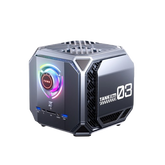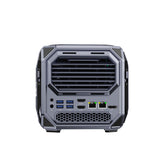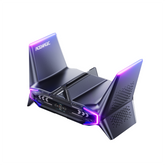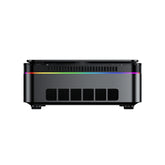Tablet vs Laptop: Which One Should You Choose?
Choosing between a tablet and a laptop has become a practical question for students, professionals, and anyone balancing mobility with productivity. Over the past decade, both devices have evolved from niche tools into everyday essentials. Tablets are now capable of handling work tasks once limited to laptops, while laptops have become lighter and more adaptable to mobile lifestyles. This overlap has blurred the line between the two, leaving users uncertain which device fits their needs best.

How Tablets and Laptops Have Evolved
Early tablets were primarily designed for reading, note-taking, and entertainment. With the introduction of faster processors and stylus input, many tablets now run productivity apps and creative tools that rival laptops. Apple's iPad Pro and Samsung's Galaxy Tab series, for instance, support advanced editing and multitasking capabilities.
Laptops have also transformed significantly. Ultrabooks and 2-in-1 designs offer touchscreens, detachable keyboards, and longer battery life. They deliver desktop-level performance in slimmer frames, making them suitable for remote work and frequent travel. The convergence of features means users must weigh priorities—performance, portability, or flexibility—when comparing a laptop vs tablet.
This article explains the difference between a tablet and a laptop through detailed comparisons of design, performance, software, and value. It outlines the strengths and weaknesses of each device and provides a clear framework to help you choose between a tablet and a laptop based on personal or professional needs. Whether you study, create, or work on the go, understanding these differences will help you make a confident and informed choice.
Key Differences Between Tablets and Laptops
Understanding the key differences between tablets and laptops helps clarify which device better fits your daily routine. While both can handle productivity and entertainment, their design, power, and user experience differ in meaningful ways.
Design and Portability
Portability is the main factor driving interest in tablets. Most modern tablets weigh between 300 to 600 grams, with thin profiles that fit easily into small bags. They use touchscreen interfaces and optional detachable keyboards, which makes them convenient for reading, sketching, or note-taking on the move. However, prolonged typing or multitasking can feel restrictive without a physical keyboard or stand.
Laptops, though heavier—typically 1.2 to 2 kilograms—offer more balanced usability. Built-in keyboards, larger screens, and sturdy hinges support long typing sessions and multitasking. New ultrabook and 2-in-1 laptop models close the gap in portability, featuring convertible designs and reduced thickness, while still retaining the durability required for office or academic use.
| Feature | Tablet | Laptop |
|---|---|---|
| Average Weight | 0.3–0.6 kg | 1.2–2 kg |
| Input | Touchscreen, Stylus, Optional Keyboard | Full Keyboard, Touchpad |
| Ideal Use | Reading, Note-taking, Light Work | Writing, Coding, Extended Work |
| Portability | Very High | Moderate to High |

Performance and Productivity
Performance separates tablets and laptops most clearly. Even high-end tablets, such as the iPad Pro (M4) or Galaxy Tab S9, use mobile processors designed for efficiency, not continuous heavy workloads. They handle web browsing, presentations, and photo editing well but struggle with large software or parallel processes.
Laptops run on desktop-grade CPUs like Intel Core i7 or AMD Ryzen 7, offering higher clock speeds, cooling systems, and larger RAM capacities. This enables smooth multitasking, 3D rendering, and professional editing. Most work and school software—such as Microsoft Excel, Adobe Premiere, or AutoCAD—still perform best on laptops.
| Metric | Tablet | Laptop |
|---|---|---|
| Processor Type | Mobile (ARM) | Desktop/Mobile (x86) |
| RAM Range | 4GB–16GB | 8GB–64GB |
| Storage | 64GB–1TB (often fixed) | 256GB–2TB (expandable) |
| Software Compatibility | Limited desktop app support | Full desktop software |
Operating System and App Ecosystem
Operating systems define what each device can do. Tablets typically run iPadOS or Android, both built around touch-based interaction and mobile apps. These systems emphasize simplicity and efficiency, offering a wide range of optimized tools for browsing, streaming, sketching, and basic productivity. The app ecosystems are large, but the software is usually lighter, focusing on mobility instead of deep customization.
Laptops rely on Windows, macOS, or ChromeOS, which support full-featured desktop applications. These platforms enable advanced tasks such as coding, professional design, or database management. They also allow file system control, external hardware integration, and multitasking across multiple windows. While tablets have improved in this area, they still rely on app versions that trade complexity for ease of use. Users who depend on specialized tools—like Adobe Creative Suite or Microsoft Office with macros—will find laptops better aligned with their workflow.
Battery Life and Charging
Battery performance varies, but tablets generally last longer per charge. Their energy-efficient chips and compact displays deliver 8 to 14 hours of active use, suitable for flights, lectures, or meetings. Many tablets also use USB-C fast charging, reaching full capacity in under two hours.
Laptops, particularly those with high-performance processors or dedicated graphics, consume more power. Typical battery life ranges from 6 to 10 hours, depending on workload and screen brightness. However, advancements in chip design, such as Apple's M-series or Intel's Evo-certified platforms, have closed the gap, with some models sustaining all-day productivity.
| Category | Tablet | Laptop |
|---|---|---|
| Average Battery Life | 8–14 hours | 6–10 hours |
| Charging Time | 1.5–2 hours | 2–3 hours |
| Energy Efficiency | High | Moderate |
| Best Use Case | Travel, casual work, study | Office, creative projects, long tasks |
Display and User Experience
Display quality strongly influences the experience of using a tablet vs laptop. Tablets emphasize visual comfort and touch interaction. Most models offer high-resolution screens (2K or higher) with vivid color reproduction and brightness levels exceeding 500 nits, making them suitable for drawing, watching videos, or reading in daylight. The touchscreen and stylus support give creators precise control for sketching or note-taking. However, small screen sizes—usually 10 to 13 inches—limit multitasking and extended typing.
Laptops, in contrast, provide larger screens—often 13 to 17 inches—which support multiple windows and detailed editing. Modern displays now include OLED or high-refresh options for design, gaming, and video production. While touchscreens are available on select models, most rely on trackpads and keyboards for precision. For long working sessions or complex layouts, laptops offer better ergonomics and eye comfort.
| Feature | Tablet | Laptop |
|---|---|---|
| Typical Screen Size | 10–13 inches | 13–17 inches |
| Resolution | 2K–4K | Full HD–4K |
| Touch Input | Yes (stylus optional) | Often optional |
| Multitasking View | Limited | Full window support |
| Ideal Use | Drawing, reading, browsing | Editing, multitasking, office work |
Price and Value for Money
Cost is a deciding factor when comparing a laptop vs tablet. Entry-level tablets start around $300–$500, providing solid performance for reading, streaming, and light work. Premium options like the iPad Pro or Galaxy Tab S9 Ultra can exceed $1,000, especially when accessories such as keyboards and styluses are included. While tablets offer long-term battery health and fewer maintenance needs, their internal storage and hardware are often fixed, limiting long-term upgrades.
Laptops cover a wider price range—from budget models under $600 to professional setups above $2,000. The higher cost typically reflects faster processors, larger storage, and improved build quality. Users who need performance longevity or upgradable hardware gain better value from laptops. However, tablets can still be more economical for those prioritizing portability and simplicity over computing power.
| Category | Tablet | Laptop |
|---|---|---|
| Starting Price | $300–$500 | $400–$600 |
| Premium Range | $800–$1,200+ | $1,000–$2,000+ |
| Upgrade Options | Limited | RAM and SSD expandable |
| Longevity | 4–5 years typical | 5–7 years typical |
| Best Value For | Portability, light work | Power, long-term use |
Advantages of Tablets
Tablets are designed for mobility, convenience, and versatility. Their compact form and efficient software make them suitable for studying, creative work, or daily communication. Below is a concise list of their main advantages.
- Lightweight and Highly Portable: Most tablets weigh 300–600 grams, making them ideal for travel or hybrid work setups. They slip easily into small bags and can be used comfortably while standing or moving, unlike most laptops that require a stable surface.
- Usually Have Better Front-Facing Cameras for Video Calls: Many modern tablets, including the iPad Air and Galaxy Tab S9, feature front cameras positioned for eye-level video framing. They often support 1080p resolution or higher, offering clearer visuals and better noise reduction for online meetings and virtual classes.
- Touchscreen and Stylus Support for Creativity: Tablets integrate touch interaction and stylus compatibility, allowing handwriting, sketching, and detailed note annotation. Tools like the Apple Pencil and Samsung S Pen support pressure sensitivity and palm rejection, which improves precision for artists and designers.
- Great for Media Consumption and Casual Use: High-resolution screens and long battery life make tablets excellent for streaming, reading, or browsing. They offer immersive color contrast and integrated stereo speakers, ideal for watching content or reading in relaxed settings.Often More Affordable for Basic Needs
Entry-level tablets start around $300, covering communication, learning, and light work. With minimal maintenance and automatic updates, they provide long-term value for users who need reliability over raw performance.
Advantages of Laptops
Laptops remain the standard choice for tasks that demand computing power, multitasking, and full-featured software. Their hardware and interface make them suitable for students, professionals, and creators who rely on consistent performance.
- More Powerful Hardware for Demanding Tasks: Laptops use Intel Core, AMD Ryzen, or Apple M-series processors capable of handling advanced workloads such as 3D modeling, programming, or large spreadsheet analysis. With greater RAM capacity—often up to 64GB—and superior cooling systems, they sustain performance under heavy use.
- Full Desktop Software and Multitasking: Unlike tablets, laptops run complete desktop operating systems, allowing installation of complex software suites like Adobe Creative Cloud, AutoCAD, or Microsoft Office Professional. Users can open multiple applications and browser tabs simultaneously, increasing productivity for research, editing, or design projects.
- Better Keyboard and Connectivity Options: A built-in keyboard and trackpad support faster, more accurate input. Laptops also include multiple ports—USB, HDMI, Ethernet, and SD card readers—that simplify data transfer and external monitor use. This makes them suitable for office setups and professional workflows.
- Higher Storage Capacity and Upgradeability: Most laptops feature 256GB to 2TB SSD storage, with options for expansion. RAM and drives can be upgraded in many models, extending device life and improving long-term value. Tablets, in contrast, usually have fixed memory and storage configurations.
- Ideal for Gaming, Coding, and Professional Work: Dedicated graphics cards and optimized processors make laptops capable of running high-end games, coding environments, and video-editing platforms. These features support creative and technical professionals who require consistent power and specialized software compatibility.
How to Choose Between a Tablet and a Laptop
Choosing between a tablet and a laptop depends on how you plan to use the device. Your work habits, study needs, and mobility requirements should guide your decision. The following points outline a clear approach to selecting the right option.

Identify Your Primary Use Case
Start by defining what you expect the device to do most of the time.
- Students often prioritize note-taking, online classes, and reading, where tablets provide convenience.
- Office professionals rely on multitasking, document creation, and video conferencing, which are better handled by laptops.
- Designers or creatives may prefer tablets for sketching, while engineers and developers benefit from the processing power of laptops.
A clear understanding of your core purpose simplifies the decision process and prevents overpaying for unused features.
Match Device Strengths to Your Needs
Consider what matters most to your workflow.
- Portability: Tablets are lighter and better suited for travel or casual work.
- Performance: Laptops manage complex tasks such as coding or editing large files.
- Typing Comfort: Laptops offer built-in keyboards for long writing sessions, while tablets may require detachable accessories.
- Software Compatibility: Laptops support full desktop apps, while tablets focus on mobile tools.
Balancing these factors helps determine which device provides better long-term value.
Consider Hybrid Devices (2-in-1 Laptops)
If neither option fully meets your needs, a 2-in-1 laptop may serve as a middle ground. Convertible models like the Microsoft Surface Pro or HP Spectre x360 combine touchscreen versatility with laptop-grade performance. They can switch between tablet and laptop modes, allowing flexibility for note-taking, presentations, and professional work.
Conclusion
In short:
- Choose a tablet for simplicity, portability, and creative input.
- Choose a laptop for processing power, multitasking, and long-term durability.
- Consider a 2-in-1 device if you want the flexibility of both.
Whichever option you choose, align the device with your actual usage rather than features that look appealing but go unused. This approach helps maximize value and ensures your technology complements your lifestyle instead of complicating it.
FAQ
Is a tablet better than a laptop for students?
A tablet works well for students focused on reading, note-taking, and online learning. Paired with a keyboard or stylus, it can handle light assignments and presentations. However, for tasks involving data analysis, programming, or research papers, a laptop offers better performance and multitasking capabilities.
Can a tablet replace a laptop for work or school?
It depends on the type of work. For digital planners, teachers, and writers, tablets provide enough functionality. For professions requiring spreadsheet management, video conferencing, or multiple software tools, a laptop remains the more efficient choice.
Which lasts longer — a laptop or a tablet?
Laptops typically last 5–7 years, while tablets last 4–5 years on average. The longer lifespan of laptops comes from upgradable parts like storage and RAM. Tablets have sealed hardware, which limits repair and upgrade options.
Are tablets powerful enough for video editing or gaming?
High-end tablets such as the iPad Pro (M4) or Galaxy Tab S9 Ultra can handle moderate video editing and light gaming. However, laptops with dedicated GPUs or higher RAM capacity perform better in rendering, 3D work, or intensive gaming sessions.
What's the best tablet with a keyboard for productivity?
Popular choices include the iPad Air with Magic Keyboard, iPad Pro with Magic Keyboard, and Microsoft Surface Go. These combinations offer laptop-like typing and support productivity apps like Microsoft Office and Google Workspace.
How do 2-in-1 hybrid laptops compare to tablets?
2-in-1 laptops bridge the gap between portability and performance. They function as tablets when folded or detached but run full desktop software when used in laptop mode. This flexibility makes them a strong alternative for professionals who switch between touch and keyboard input.
Should I buy both a tablet and a laptop?
Owning both can be useful if your tasks vary significantly. Many users pair a lightweight tablet for travel or meetings with a powerful laptop for intensive projects. However, for most users, a single well-chosen device or a hybrid 2-in-1 system is sufficient.








Leave a comment
Please note, comments need to be approved before they are published.